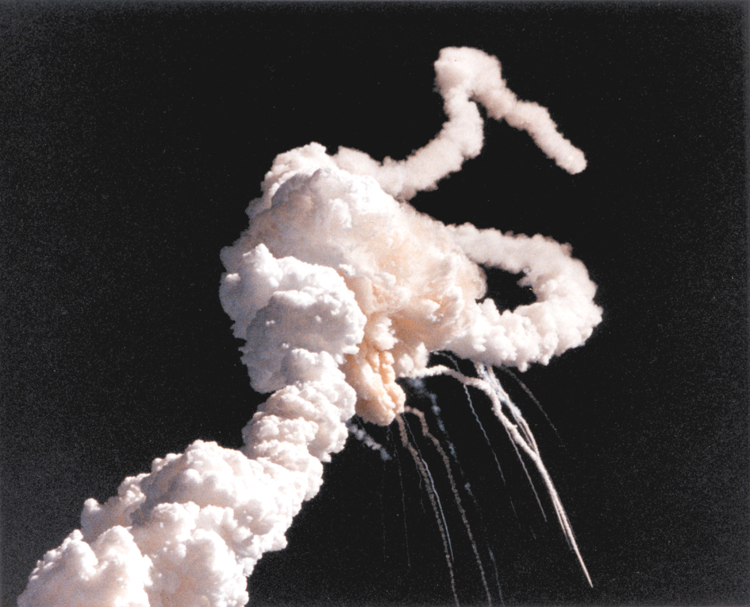Even when things go according to plan, applied science is rarely cheap and always complicated—and when things go badly, the smallest mistake can end up costing millions or billions of dollars, and even, sometimes, human lives. Here are six reminders of why it’s always good to double-check your work, especially when dealing with spaceflight.
(Note: Numbers are not adjusted for inflation.)
The mistake: A pair of parts was installed backwards.
Estimated cost: Over $260 million
What happened: Genesis was a NASA probe meant to bring back space material from beyond Earth’s moon. But its September 2004 landing, three years after takeoff, didn’t go all that smoothly. The probe, carrying samples of solar wind to return to Earth for analysis, crashed in Utah; the resulting tumble to Earth contaminated many of the probe’s precious samples, though some were recovered. A NASA report released in 2009 said that Lockheed Martin workers had inverted the position of the probe’s accelerometers; the craft never knew it was decelerating into the Earth’s atmosphere, and therefore never deployed its parachute.
 Image credit: Wikipedia CC/Bricktop
Image credit: Wikipedia CC/Bricktop
The mistake: An “O-ring” gasket failed in unexpectedly cold weather.
Estimated cost: $5.5 billion
What happened: On January 28, 1986, NASA and the world watched in horror as the Space Shuttle Challenger exploded, just 73 seconds into its flight. The entire crew—Michael J. Smith, Dick Scobee, Ronald McNair, Ellison Onizuka, Christa McAuliffe, Gregory Jarvis, and Judith Resnik—perished. The problem, NASA eventually discovered, lay in Challenger’s O-rings, components in the shuttle’s solid rocket boosters that can normally withstand tens of thousands of pounds per square inch of pressure. However, these O-rings weren’t designed to operate at low temperatures, and the morning of the Challenger launch was unusually cold. The O-ring seal failed at launch, was quickly resealed by aluminum oxides coming from the rocket, and was torn apart seconds later by strong winds, resulting in the explosion.
 Image credit: Getty/Lawrence Lawry
Image credit: Getty/Lawrence Lawry
The mistake: Twentieth century programmers allotted just two digits to register years, failing to anticipate the turn of the century.
Estimated cost: $308 billion
What happened: Also known as the Millenium Bug, the Y2K problem was the result of early computer programmers deciding to use two-digit years for data instead of four digits—making data systems unable to distinguish the year 1900 from 2000. As the year ‘00’ approached, press reports hyped up the prospect of worldwide doom, forecasting ravaged computer systems around the world. Most companies were able to fix the problem before the deadline, except for a few places like the U.S. Naval Observatory, where the clock temporarily displayed the incorrect date. But these preventative fixes, across all the world’s computer systems, was costly: In November 1999, the U.S. Department of Commerce reported that the total cost of remediation in the U.S. was around $100 billion; by 2006, that number had risen another $34 billion. Worldwide, the cost is believed to be around $308 billion.
The mistake: Some engineers used feet; others used meters.
Estimated cost: $125 million
What happened: The Mars Climate Orbiter was a satellite meant to collect data on Mars for two Earth years (about one Martian year) and act as a relay station for data from the Mars Polar Lander. Launched in December 1998, the Orbiter was set to arrive at the Red Planet later the next year. But on September 23, 1999, NASA announced the orbiter was lost. An investigation revealed the loss was due to confusion in mathematical units: While one team working on the spacecraft had used standard U.S. measurements, like feet, the other team had used the metric system. “The problem here was not the error, it was the failure of NASA’s systems engineering, and the checks and balances in our processes, to detect the error. That’s why we lost the spacecraft,” Dr. Edward Weiler, NASA’s Associate Administrator for Space Science said in a statement at the time.
 The galaxy M100, snapped by Hubble before (left) and after (right) its first servicing. Image credit: NASA
The galaxy M100, snapped by Hubble before (left) and after (right) its first servicing. Image credit: NASA
The mistake: The Hubble telescope’s main mirror was ground down just 2 microns (one-fiftieth the thickness of a human hair) too far, resulting in blurry vision.
Estimated cost: $1.5 billion for a trip to space to repair it (estimated cost of one Space Shuttle launch)
What happened: Soon after the Hubble Space Telescope settled into orbit in 1990, scientists were distressed to find that the images it was sending back were of much lower quality than expected. Turns out the telescope’s primary mirror had been ground down just a little too far—towards its edge, the mirror was too flat by just 2 microns—causing light reflecting off the edge of Hubble’s mirror to focus at a different point from light bouncing off closer to the center. In 1993, a repair crew took a shuttle flight up to install what basically amounted to eyeglasses for Hubble’s unfocused gaze: two mirrors specially designed to correct the aberration caused by the flaw, as well as other correction devices for other components.
The mistake: An old piece of software code couldn’t store an unexpectedly large integer, triggering a self-destruct.
Estimated cost: $370-500 million
What happened: The European Space Agency’s Ariane 5 rocket was designed to vault Europe to the head of space exploration and industry, though its guidance system was running some of the same computer code as its older and slower sibling, Ariane 4. At 36.7 seconds into the launch, the guidance computer routinely attempted to convert the sideways velocity of the rocket from a 64-bit “floating point” format to 16-bit “signed integer” format. But in this case—with Ariane 5’s faster rocket—the velocity conversion generated a number that was too big to be represented by a 16-bit signed integer (which can only store values up to 32,767.) The nozzles of two solid rocket boosters and an engine suddenly swung out of position, nearly detaching the boosters from the body of the rocket, triggering a self-destruct mechanism; the rocket disintegrated 39 seconds into its maiden flight, destroying several extremely expensive satellites.
Ordinarily, “when a program converts data from one form to another, the conversions are protected by extra lines of code that watch for errors and recover gracefully,” science historian James Gleick wrote in the New York Times. “Indeed, many of the data conversions in the guidance system’s programming included such protection. But in this case, the programmers had decided that this particular velocity figure would never be large enough to cause trouble. After all, it never had been before. Unluckily, Ariane 5 was a faster rocket than Ariane 4.”
Featured image credit: NASA
Comments